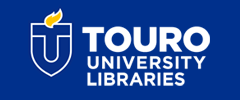NYMC Faculty Publications
DOI
10.1155/2017/3464953
Journal Title
Stem Cells International
First Page
Art. ID.:3464953
Document Type
Article
Publication Date
7-1-2017
Department
Physiology
Disciplines
Medicine and Health Sciences
Abstract
Previously, we reported that treatment with the G9a histone methyltransferase inhibitor BIX01294 causes bone marrow mesenchymal stem cells (MSCs) to exhibit a cardiocompetent phenotype, as indicated by the induction of the precardiac markers Mesp1 and brachyury. Here, we report that combining the histone deacetylase inhibitor trichostatin A (TSA) with BIX01294 synergistically enhances MSC cardiogenesis. Although TSA by itself had no effect on cardiac gene expression, coaddition of TSA to MSC cultures enhanced BIX01294-induced levels of Mesp1 and brachyury expression 5.6- and 7.2-fold. Moreover, MSCs exposed to the cardiogenic stimulus Wnt11 generated 2.6- to 5.6-fold higher levels of the cardiomyocyte markers GATA4, Nkx2.5, and myocardin when pretreated with TSA in addition to BIX01294. MSC cultures also showed a corresponding increase in the prevalence of sarcomeric protein-positive cells when treated with these small molecule inhibitors. These results correlated with data showing synergism between (1) TSA and BIX01294 in promoting acetylation of lysine 27 on histone H3 and (2) BIX01294 and Wnt11 in decreasing beta-catenin accumulation in MSCs. The implications of these findings are discussed in light of observations in the early embryo on the importance of beta-catenin signaling and histone modifications for cardiomyocyte differentiation and heart development.
Recommended Citation
Yang, J., Kaur, K., Edwards, J. G., Eisenberg, C., & Eisenberg, L. (2017). Inhibition of Histone Methyltransferase, Histone Deacetylase, and Beta-catenin Synergistically Enhance the Cardiac Potential of Bone Marrow Cells. Stem Cells International, 2017, Art. ID.:3464953. https://doi.org/10.1155/2017/3464953
Publisher's Statement
Originally published in Stem Cells International, 2017, 3464953. The original material can be found here.
Creative Commons License

This work is licensed under a Creative Commons Attribution 4.0 International License.


